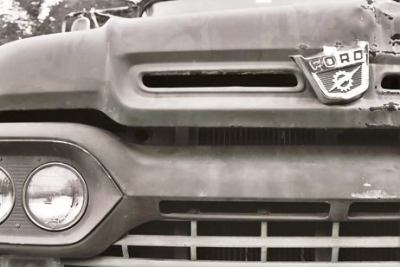
I hope everyone had a nice Christmas. We're going to get a little whimsical for this post and visit a heavy equipment junkyard along the Aiken-Augusta highway. The next post will be epic, detailing the largest building we got into in the CSRA (that's the Central Savannah River Area, don't ya know) and it's going to take a couple posts to cover. For now then, in the holiday spirit, we'll take it a little easy. If you were driving from Augusta to the building-to-be-posted you might pass the junkyard anyway, so it does make some sense.
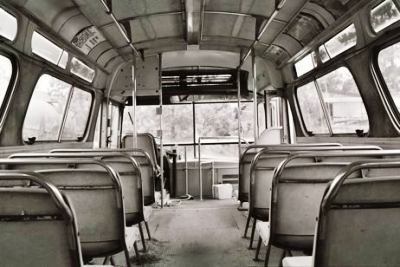
Remember this view? I don't know if sitting in the back of the bus carries the same connotations it once did, but that used to be where all the bad kids sat so they could do bad things on the way to and from school. The good kids sat in the middle seats and those subject to getting beat up would go for the front. I never really did most of those bad things, but I still preferred sitting in the back, myself.
There are a couple impressive photo books out there that have shots of smashed-up vintage cars. One is "Car Crashes and Other Sad Stories," by Mell Kilpatrick. Mell took pictures for newspapers in Southern California in the 1940's and 1950's and was often one of the first people to arrive at accident scenes. Some of his photos are undeniably gruesome (you can often see the victims strewn about the wreckage) but there is something disquietingly beautiful about the mangled Packards and disemboweled Chevy's. All that fractured glass and twisted chrome reminds you that life can be dangerous and it's always been so. But especially when you're not wearing your seatbelt.
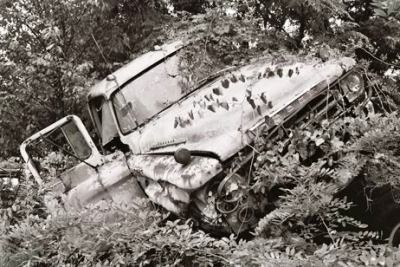
Another book of interest is "Strange Days, Dangerous Nights," by Larry Millett. Larry worked as a reporter for the St. Paul Pioneer Press in Minnesota and has assembled photos from the Pioneer Press and the St. Paul Dispatch circa 1940-1960. Many are accidents and murder scenes, but there's plenty of strange "cultural" shots as well. These photos were all published, sometimes on the front page, and if you think media coverage can be graphic now this book (and exhibit) will give you pause.
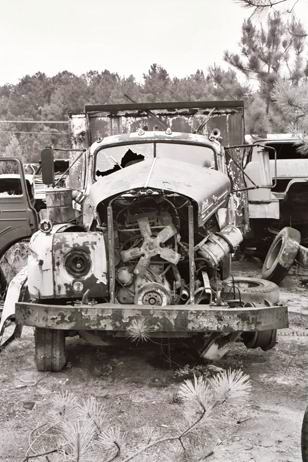 One of the great things about those old newspaper photos is that nearly all the photgraphers used the Speed Graphic camera, first manufactured in 1912. The Speed Graphic is that classic black box camera with the bellows and a couple lenses and a huge flash. That camera, particularly when used with a flash at night, lit up the foreground, but threw long, dark shadows into the background, which went to black. Thus the shots are very striking and even mundane pictures can appear powerfully stark. Try doing that with your digital! By the mid-1960s, of course, small 35mm cameras were becoming popular and the last Speed Graphic was made in 1973, the year I was born.
One of the great things about those old newspaper photos is that nearly all the photgraphers used the Speed Graphic camera, first manufactured in 1912. The Speed Graphic is that classic black box camera with the bellows and a couple lenses and a huge flash. That camera, particularly when used with a flash at night, lit up the foreground, but threw long, dark shadows into the background, which went to black. Thus the shots are very striking and even mundane pictures can appear powerfully stark. Try doing that with your digital! By the mid-1960s, of course, small 35mm cameras were becoming popular and the last Speed Graphic was made in 1973, the year I was born.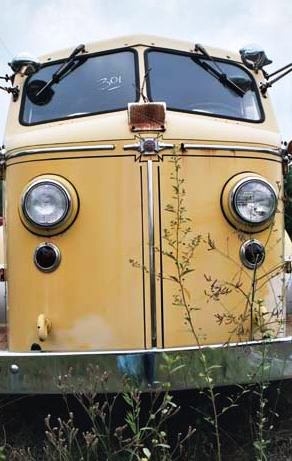 Taking to the road in South Carolina is a bit like playing Russian Roulette. I recall hearing that at one time Aiken County had the highest per capita auto accident rate in the US. I don't doubt it. As a result, there's lots of smashed cars around. There's a huge junkyard in a forest outside Aiken that is full of cars dating back to the 1930's. However, I never went to check it out because it just didn't seem like a good idea. In the South, in particular, you'll find that people are very protective of their property. When someone threatens you with a shotgun if you don't get off their land, they're not just trying to scare you. You better leave. Quickly. On the two occasions that I've been confronted it's seemed questionable to me whether the angry citizens I found myself dealing with really owned the property I was on or not. If they did, why would they admit it? Yeah, I know, a lawsuit. Still, they should have been embarrassed. Both were rotted eyesores off busy highway intersections. In any case, it's always best to play dumb and polite and make a hasty exit.
Taking to the road in South Carolina is a bit like playing Russian Roulette. I recall hearing that at one time Aiken County had the highest per capita auto accident rate in the US. I don't doubt it. As a result, there's lots of smashed cars around. There's a huge junkyard in a forest outside Aiken that is full of cars dating back to the 1930's. However, I never went to check it out because it just didn't seem like a good idea. In the South, in particular, you'll find that people are very protective of their property. When someone threatens you with a shotgun if you don't get off their land, they're not just trying to scare you. You better leave. Quickly. On the two occasions that I've been confronted it's seemed questionable to me whether the angry citizens I found myself dealing with really owned the property I was on or not. If they did, why would they admit it? Yeah, I know, a lawsuit. Still, they should have been embarrassed. Both were rotted eyesores off busy highway intersections. In any case, it's always best to play dumb and polite and make a hasty exit. 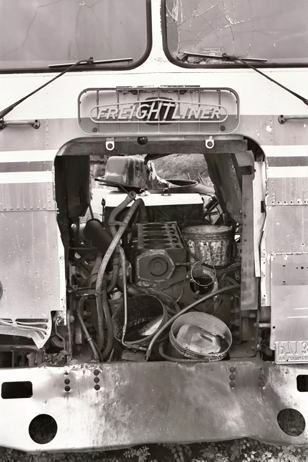 "All progressions from a higher to a lower order are marked by ruins and mystery and a residue of nameless rage"-Cormac McCarthy, "Blood Meridian." "Blood Meridian" is a brilliant, bloody novel about, at least partially, how a proximity to sustained violence can result in deep disaffection, putting the participant at a remove from civilized society in a way that is real and possibly permanent. The book is like Apocalypse Now set in the desert of the West around 1850. In the mid-1990's, Vietnam Vet Bill Shields wrote three books of powerful poems about the difficulty soldiers have reintegrating. It's something to think about right now.
"All progressions from a higher to a lower order are marked by ruins and mystery and a residue of nameless rage"-Cormac McCarthy, "Blood Meridian." "Blood Meridian" is a brilliant, bloody novel about, at least partially, how a proximity to sustained violence can result in deep disaffection, putting the participant at a remove from civilized society in a way that is real and possibly permanent. The book is like Apocalypse Now set in the desert of the West around 1850. In the mid-1990's, Vietnam Vet Bill Shields wrote three books of powerful poems about the difficulty soldiers have reintegrating. It's something to think about right now.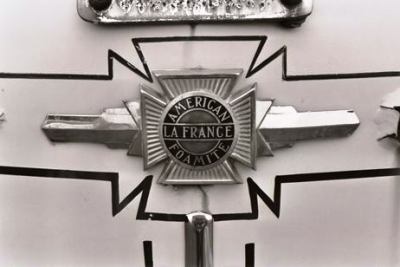
I won't argue whether our society is progressing from a higher to lower order. I'll leave that to others to waste their time with. However, it does seem like things constructed in the fast-fading past were built better and more expressively, at least when it comes to architecture and design (and the grill badges on fire trucks). McCarthy was speaking of civilizations, but the statement is no less applicable to the decay of objects. And these places and things now frequently lie in ruins and there is always an air of mystery about them. You can even imagine that the neglect and abandonment of what was once so important to those who built them and the people that used them, now unhappily forgotten, has cast the slightest pall of rage over what little remains. I can't believe that wandering around an abandoned Wal-Mart in 50 years will be as profound an experience as creeping through a turn-of-the-century farmhouse or Art Deco movie theater. But, ah, what a thought, that: abandoned Wal-Marts.
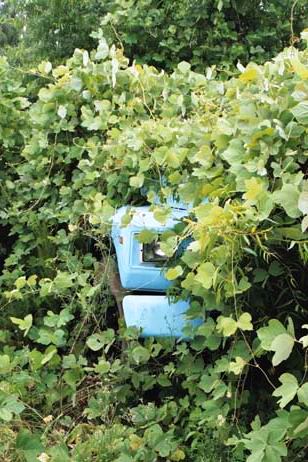 A kind reader suggested that some of the places featured on this site be GPS'd so that they can be revisited. This is a good idea and it'd be especially interesting to go back to areas that will be demolished, such as the brick factory, and see what was built there. You could then take a photo and say, "Where this $200,000 townhome is there used to be a brick kiln." I might be able to do this on a return visit to the area, but if anybody else down there wants to try let me know. I'll only send you on safe and lawful excursions. But watch out for the kudzu. See ya next time.
A kind reader suggested that some of the places featured on this site be GPS'd so that they can be revisited. This is a good idea and it'd be especially interesting to go back to areas that will be demolished, such as the brick factory, and see what was built there. You could then take a photo and say, "Where this $200,000 townhome is there used to be a brick kiln." I might be able to do this on a return visit to the area, but if anybody else down there wants to try let me know. I'll only send you on safe and lawful excursions. But watch out for the kudzu. See ya next time.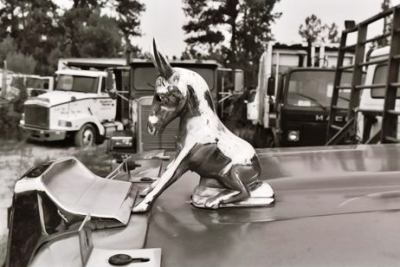
3 comments:
Hello,
I am really enjoying your photos.
I am making a biography of a man named Rusell Jim.
He is a Native American who ha fought for vlean up of radio active waste
Near Hanford Nuclear Rezervation.
As he grew up, he was sent away to boarding school. The put him on a bus
And he cried. He was only 5.
I am requesting permission to use your fine photo of the back of the bus
For my film, "Russell Jim; A Quiet Warrior." It is for my class st the University of Washington,
Native Voices Program. No profit will be made from the film.
Thank you.
Jeanne Givens jg0047rjmj@aol.com. 208-699-3757 c
Hi Jeanne,
Thanks for your message. I'm happy to let you use that photo for your film. It sounds like a very worthy project. All I ask is that I'm given credit as "John Mulhouse" or "City of Dust" somewhere (either in the film credits or as text under the photo, perhaps).
I will send you a file of the shot with better resolution shortly.
Glad you like the photos! JM
My daddy used to be with the Richmond County Fire Department and the LeFrance is a hook and ladder truck that they had bought. If I remember correctly this was the first hook and ladder truck in Richmond County. I remember climbing all over it. I had fun playing in that truck.
Post a Comment